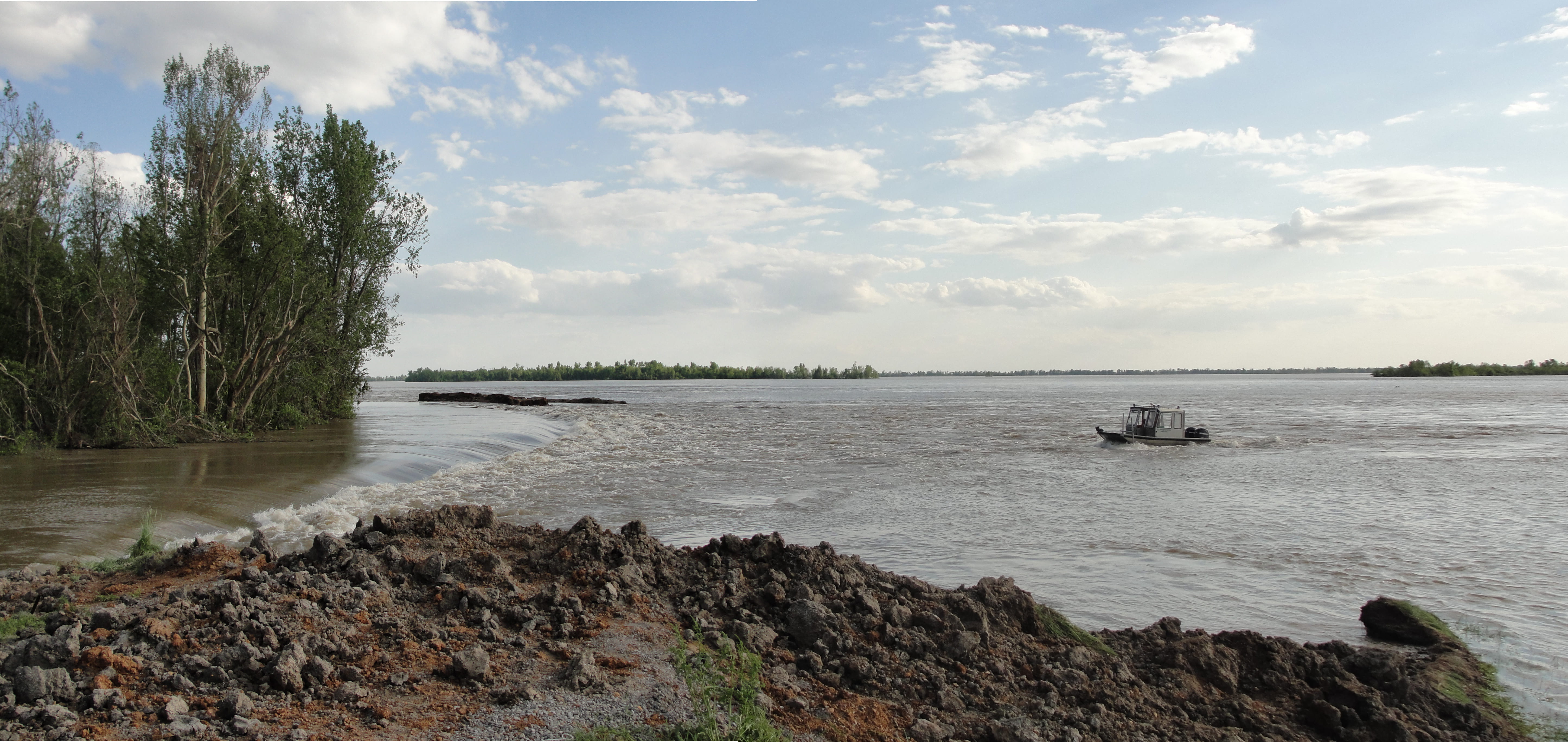Levee detonations reduced 2011 flood risk on Mississippi River, UCI-led study finds
Researchers urge greater control of resultant erosion in future scenarios

Irvine, Calif., March 20, 2015 – A controversial decision in 2011 to blow up Mississippi River levees reduced the risk of flooding in a city upstream, lowering the height of the rain-swollen river just before it reached its peak, according to a newly published computer modeling analysis led by UC Irvine scientists.
The work focused on a Missouri agricultural area called the New Madrid Floodway that was inundated when the levees were detonated. The researchers found that the region would have flooded anyway if the river had been allowed to overtop the levee banks. And separate modeling showed that the resulting damage to crops and buildings would have been similar either way, though the detonations did shift the damage zone toward Missouri and away from Illinois and Kentucky.
Previous studies had reported more than $50 million in levee repair costs as well as damage solely from the rapid flow of water across the floodway after the detonations, which scoured farmland and left behind thick deposits of unwanted sand. The new research found that allowing those levees to overtop naturally would have resulted in less erosion.
Still, the flood risk was reduced for the upstream city – Cairo, Ill. – just as intended.
“Our model’s not saying the water would have definitely overtopped the levees at Cairo,” said UCI professor and chair of civil & environmental engineering Brett Sanders, an author of the study led by UCI graduate student Adam Luke. “It doesn’t say it wouldn’t have happened. What we’re saying is that detonation reduced the risk of flooding.”
Luke built a computer model of the devastating 2011 floods along the Mississippi and Ohio rivers. Then he compared modeling runs conducted both with and without the levee detonations. He discovered that they resulted in a lowering of Mississippi River levels near Cairo by 2.6 feet.
The team also used a separate computer model developed by the Federal Emergency Management Agency to estimate the costs: more than $250 million in building and crop damage in the flooded area. That’s about $11 million less than it would have been had the levees not been detonated but allowed to overtop without intervention.
The study’s findings support earlier work showing the erosion of flood plains caused by levee bursts, leaving scour holes and sand deposits. With that being a potentially major drawback to flood control by detonation, the authors recommend that engineers place greater emphasis on minimizing erosion when creating such a flood control system.
“Can we design these breaches so there is less scouring and erosion, so we don’t get deposits of sand that require millions of dollars to repair?” Sanders asked.
Brad Kaplan, Jeremiah Lant and Doug Alsdorf of The Ohio State University and Paul Bates and Jeff Neal of the United Kingdom’s University of Bristol also contributed to the study, which was published online March 8 in the science journal Natural Hazards.
It was funded by the National Science Foundation (grant DMS-1331611).
About the University of California, Irvine: Currently celebrating its 50th anniversary, UCI is the youngest member of the prestigious Association of American Universities. The campus has produced three Nobel laureates and is known for its academic achievement, premier research, innovation and anteater mascot. Led by Chancellor Howard Gillman, UCI has more than 30,000 students and offers 192 degree programs. It’s located in one of the world’s safest and most economically vibrant communities and is Orange County’s second-largest employer, contributing $4.8 billion annually to the local economy. For more on UCI, visit www.uci.edu.
Media access: Radio programs/stations may, for a fee, use an on-campus ISDN line to interview UC Irvine faculty and experts, subject to availability and university approval. For more UC Irvine news, visit wp.communications.uci.edu. Additional resources for journalists may be found at communications.uci.edu/for-journalists.